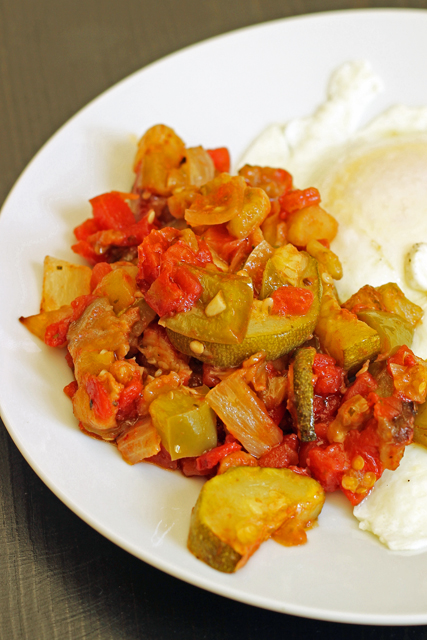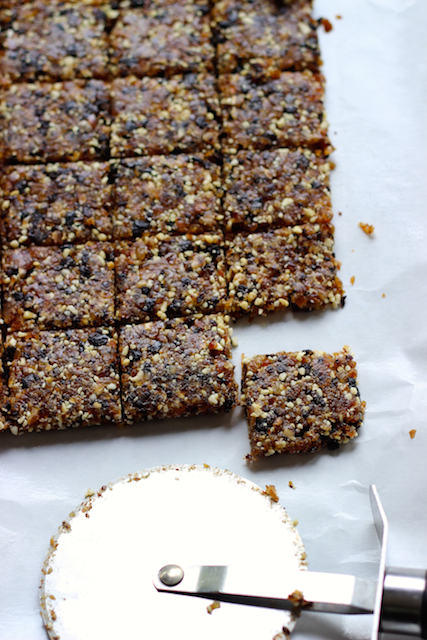Are you gearing up for a Whole 30 or other special diet? These tips can help you prepare AND reach your goal successfully.

Want to save this post?
Enter your email below and get it sent straight to your inbox. Plus, I'll send you budget recipes and money-saving tips every week!
This is the week that many people start thinking about new ways of eating and shopping — if they haven’t already. Whether it’s the excesses of December catching up with us or the start of the new year that encourages us to change, now is the time to think about how to improve our diets and change some bad habits.
One way to do that is to do a cleanse or other nutritional reset like the Whole 30. I did one a few years ago and never felt better in my whole life. Last spring, my family and I did a sugar fast, and again, saw good results. Drastically changing one’s diet, even if it’s for a month can be the start of good things, particularly better health and improved eating habits.
My dad recently found out that he has stage 1 diabetes. This means that he and my mom have some dietary changes to work out in the next few weeks — unless, of course, he wants to relegate himself to meds and fake foods, both of which I think are a bad idea.
I’ve recommended that they try the Whole 30. As soon as I heard about my dad’s diagnosis, I sent him the book, It Starts with Food.
My Christmas gift to them is to fill their freezer with high-protein, low-carb foods. I know from experience that switching up their diet can bring good changes.
This post is partly for my mom and dad, to help them get their kitchen ready for better meals. If you’re getting ready to do a Whole 30 or start another special diet, these steps will help you prepare and have success.
How to Prepare for a Whole 30
1. Take inventory of what you have.
I think an inventory is always a good place to start, particularly if your budget is a concern. If you know what you have in the cupboards, you won’t be making double purchases or buying things that you don’t need.
Download this inventory worksheet and take stock of what you have in the refrigerator, freezer, and pantry.
Grilled Salmon with White Sweet Potato Hashbrowns
2. Eliminate what you won’t be using.
Once you have a working list of what’s on hand, start eliminating the foods that you won’t be eating on your new diet. If you’re doing the Whole 30, this means reading ingredients lists and eliminating anything that contains dairy, gluten, grain, soy, sugar, and alcohol.
It’s tempting to want to use these things up or save them for another time. If you are only doing this diet for a limited amount of time, that’s probably okay. Just remove them from the kitchen so that you won’t be tempted to eat them during your personal challenge time. If you need to make a permanent lifestyle change for health reasons, I recommend dumping it or giving it away.
Either way, once you’ve done that, cross those items off your inventory list.
3. Make a list of meals and a grocery list.
Consult your inventory to see what kinds of meals you can make from the things that you have. Create a list of meals that you can enjoy over your thirty days and start a grocery list of items that you don’t have on hand. You can use this printable calendar to help you meal plan. It works for a whole month of dinners, or you can use it for three meals and snacks for a week.
When I did my Whole 30, I went through all my favorite cookbooks and recipes and created a list of meals that are Whole 30-compliant. If you need ideas, check that list or these 30 recipes for a Whole 30 for inspiration or poke around on my Whole 30 Pinterest Board. As long as you have some favorite vegetable dishes, you’ll do just fine.
Once you’ve got your list ready, hit the grocery store, focusing on things that are in season or on sale to save the most money. Don’t buy more than you can eat in a week. You’ll want to finesse your meal planning as the month goes on.
Oven-Roasted Ratatouille
4. Prep lots of vegetables.
I ate a lot of vegetables during the Whole 30. A lot. I was constantly running out of vegetables. It’s in your best interests to spend an hour or two prepping vegetables for stir fries and salads.
- cut broccoli and cauliflower into florets
- trim carrots into sticks or coins
- cut celery sticks and slice cucumbers
- prepare salad greens
- chop tomatoes and onions
Store these in individual containers so that you can easily make salads or other vegetable dishes. Veggies are a good “legal” Whole 30 snack when you really need one.
5. Make some freezer meals.
The hardest thing about doing a Whole 30 is that our American food culture is full of dairy, gluten, grain, soy, sugar, and alcohol. These items are really hard to avoid in processed foods. You can’t just reach for a box of something, at least not without paying a premium price.
So, your frugal alternative is to make your own convenience items. Fill the freezer with precooked proteins so that you can easily and quickly assemble a meal without a lot of hassle.
I prepared two freezer cooking plans that fit the bill pretty well. They contain “normal” food that your family will enjoy eating, even if they aren’t doing a weird diet like you.
- Protein-Style Freezer Cooking Plan
- Protein Power in an Hour Freezer Cooking Plan
MamaBars (aka DIY Larabars)
6. Plan for easy, quick replacements for take-out.
The urge for take-out and a quick-fix is very tempting, particularly when you’re giving your diet a major overhaul. It’s the same when you’re trying to save money but have a craving for something off the budget. That’s when you need to plan for easy and quick replacements for take-out.
I have a list of favorite meals that are super quick to prepare and cheap to shop for. I try to keep the ingredients on hand for quick meals. Think about things like these Whole30 compliant meals:
- omelets
- lettuce wraps
- salads
- soup
- stir-fries
Grab this free printable back-up meals worksheet to help you plan for quick fixes.
7. Find “legal” purchased items to stock up on.
When I did my Whole 30, Chipotle was my very best friend. It was the only restaurant in my area where I could be guaranteed a Whole 30 compliant meal. Every date night was a salad with carnitas, guacamole, and salsa.
When our family did a sugar fast, we leaned on certain whole foods, convenience items that had no processed sugars, like fruit leathers, Ak-mak crackers, rice cakes, and Larabars.
Create a list — and a stockpile if the budget allows — of foods that fit your diet but don’t have to be homemade. This will save you time and help you stay on your diet.
8. Remember your goals.
Making diet changes can be difficult, especially when you’re used to things being a certain way. However, if your goals are clear: to be healthier, to improve your quality of life, and/or to avoid medications, it will be easier to stick to your new diet — and enjoy it.
You can read my daily log of my Whole 30. I never felt so good in all my life — except for the elusive hip pain. Since then I’ve found that yoga helps my hip pain, so I’m eager to try another Whole 30 in February after the Pantry Challenge.
Good luck with your diet changes in the new year!
What has helped you change your diet for the better?
If you’ve had a successful time changing your diet for a season or for good, please let us know what worked for you!





Dana
Great post! I’m gearing up to do another round of the Whole30 starting the 1st. Loved your other roundup posts too! This is great advice.
Jessica Fisher
Thanks! I’m doing a pantry clean out in January and then will tackle a Whole 30 in February.
Demi
I am excited to do a whole30 with you! I am actually starting Jan 1 but I plan to keep going as long as I can. I’d like to lose about 50 lbs. Plus I feel so much better when I eat that way. I did one in November and felt great. I am looking forward to stealing meal ideas.
Janet
I am starting the Pantry Challenge today. We have had anywhere from 1 to 4 house guests continuously for the past month. The last three house guests departed today. We have leftovers to eat up. More importantly, the grocery budget for the month has been spent. I have been taking inventory today. Tomorrow I will start on the meal planning. We will need to buy some meat although we have quite a bit of ham leftover from Christmas. We will also need to buy some fresh produce and dairy. I also want to purchase some baking supplies. I received my first bread maker for Christmas and am anxious to try it out. Those purchases will have to wait until payday on January 1st.
Cate
Who won the Lakeside Collection Giveaway? Can’t find it anywhere.
Kirstin
I’ve almost eliminated added sugar from my diet since July. For motivation I would recommend watching Dr. Robert H. Lustig’s talk, “Sugar: The Bitter Truth,” on YouTube. The I Quit Sugar website (iquitsugar.com) and Sarah Wilson’s website (sarahwilson.com) are helpful, too. (Those websites originate from Australia, so they’re featuring recipes and articles appropriate for summer now.)
Melissa
My SIL gave me the book Trim Healthy Mama when I was pregnant with my 8th child a year and a half ago. It was my third pregnancy with gestational diabetes, which puts me at greater risk to develop type 2 diabetes. The book’s name put me off. It’s also pretty wordy, but the principles resonated with me. Whole foods, no calorie or point counting, etc. The main gist of the plan is to keep your blood sugars even, without dangerous spikes in blood sugars. I began baby stepping the plan last January. By summer, I was pretty much 100%. I’ve lost almost 40 lbs and am now at a healthy weight for my age and height. Through it all, I kept up with my walking and have even implemented a bit of Cross Fit type exercises. I don’t buy the products the authors now sell, as they’re too expensive. I don’t use Truvia either. I do use NuNaturals Stevia. I’m enjoying my food, which is super important to me. Last night I had a roasted delicata squash that was to die for. It’s amazing how sweet veggies taste when you’re not spoiling your taste buds with sugar all of the time. This is *supposed* to be a life long approach to food. Ask me in five years if I think that’s true. For now, though, I feel much better. The brain fog is gone and I have more energy. My husband has also implemented the plan and has lost at least 30 lbs.
Jessica Fisher
I’ve heard a lot about that book. When you say wordy, do you mean hard to read?
Sue
I’m looking forward to trying this in February. Waaay too many “illegal” foods here that have to be consumed before I can try the Whole 30. Hopefully the pantry challenge will let me save enough to afford the more expensive foods the Whole 30 will require. I read your Whole 30 log entry and figured that nixing the half and half for my coffee sounds like the worst part of it . Hello tea…sigh. It’s not that tea is bad; it’s just not coffee.
Jessica Fisher
I really didn’t mind using coconut milk in my coffee. It’s a little bit sweet which helps. I kept it up for quite some time; it’s only in the last couple months that I’ve been having lattes every morning. Hmmm. Might need to change that up, eh?
Carrie
Does your husband/kids participate in the Whole 30 with you? Or do you make other food plans for your family? I’m considering this for myself but have a 4 year old and a 2 year old, and a husband who is “naturally skinny” and doesn’t need any diet.
Jessica Fisher
I made a lot of meals that were in common or that they could have rice or pasta with while I had vegetables.
However, I wouldn’t say that the Whole 30 is for weight loss. I didn’t lose any weight. Someone can be skinny and not eat healthfully. This is such a clean, unprocessed diet, I think anyone could benefit from it, though I’m not convinced that it’s good for everyone long term.